
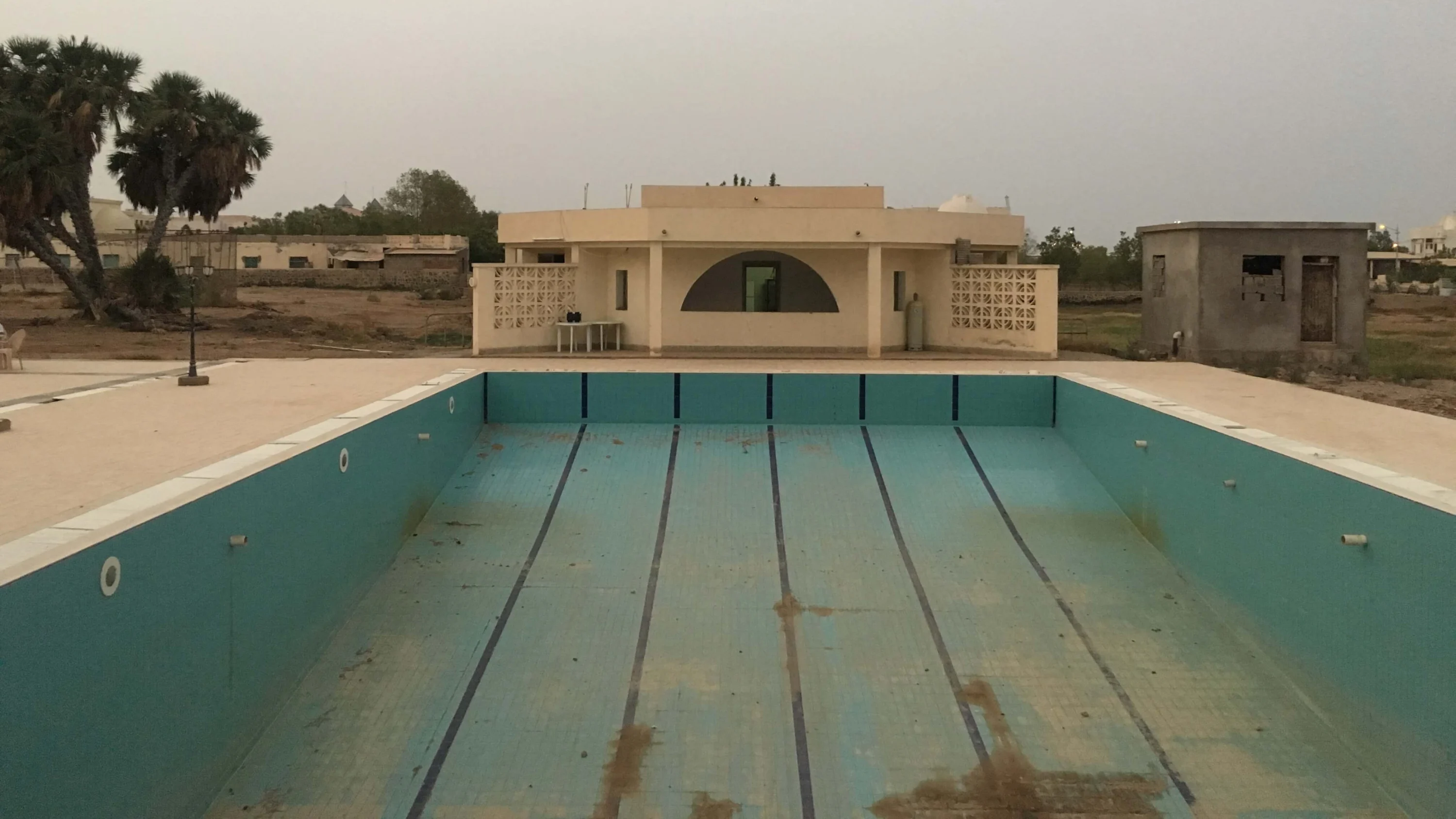
In the past few hundred years the history of Eritrea has undergone numerous shifts in its long journey to independence. War, suffering, love, pain, beauty - it has all fed into the country’s rich culture and left an indelible mark on the people there. In this near 6000 word odyssey writer Allyn Gaestel explores Eritrea’s fascinating music scene, one that is intimately linked with the human spirit.
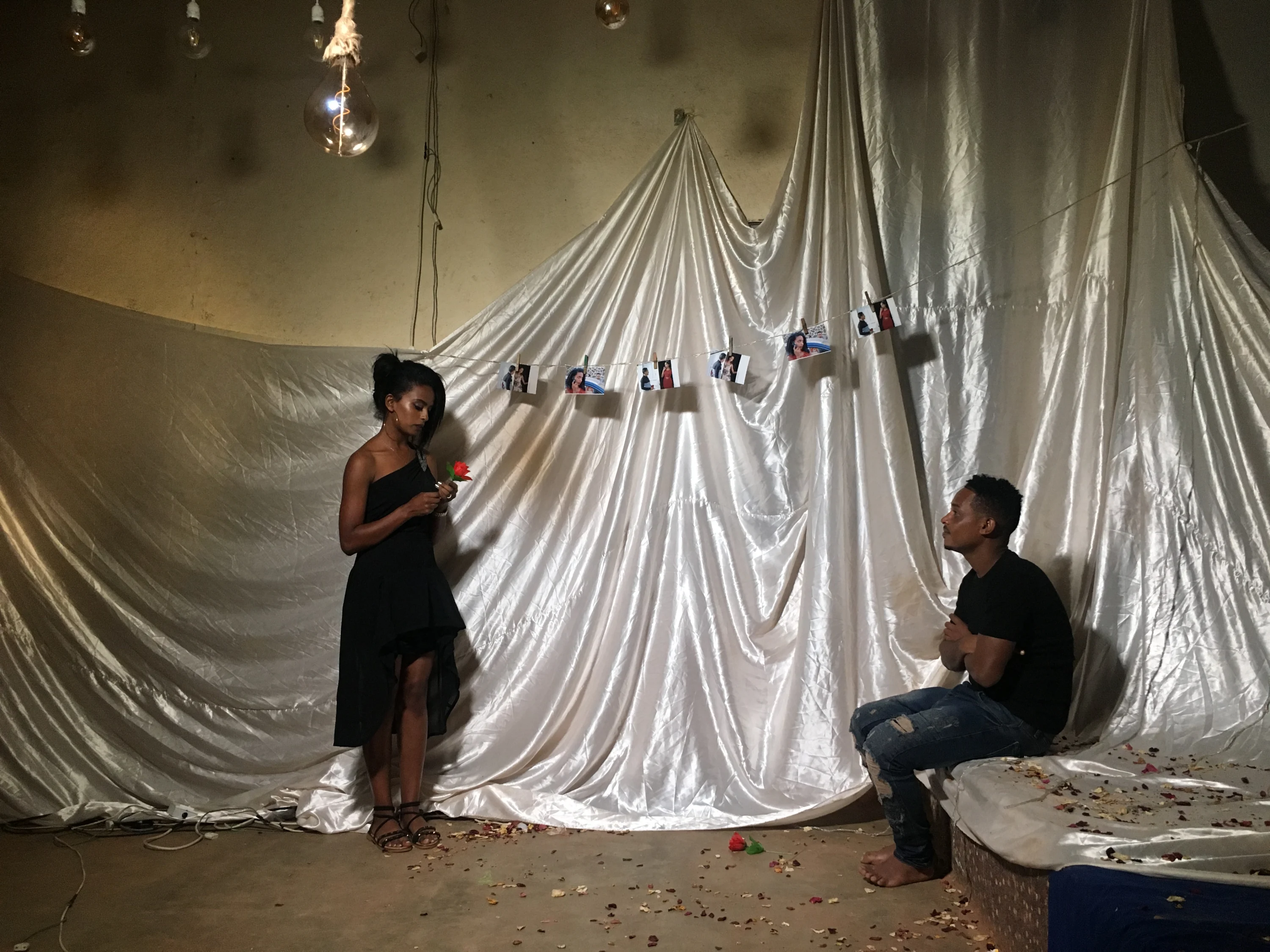
I was in a lacuna with my great love: an unfilled space, a gap; a cavity, a depression.
Lacuna means also: a missing portion of a book or manuscript. We were not speaking, but the time was anything but empty. It was, for me, a powerful period of purification and preparation: necessary, potent, painful.
In that time I went to Asmara to study love songs and endurance.
“There's a saying: we overcome patience by being patient,” Dejen Kidane, a young musician told me. “We overcome the burden of resilience with resilience. Stand on your own ground, staying put, steadfastness, that's what we write about.”
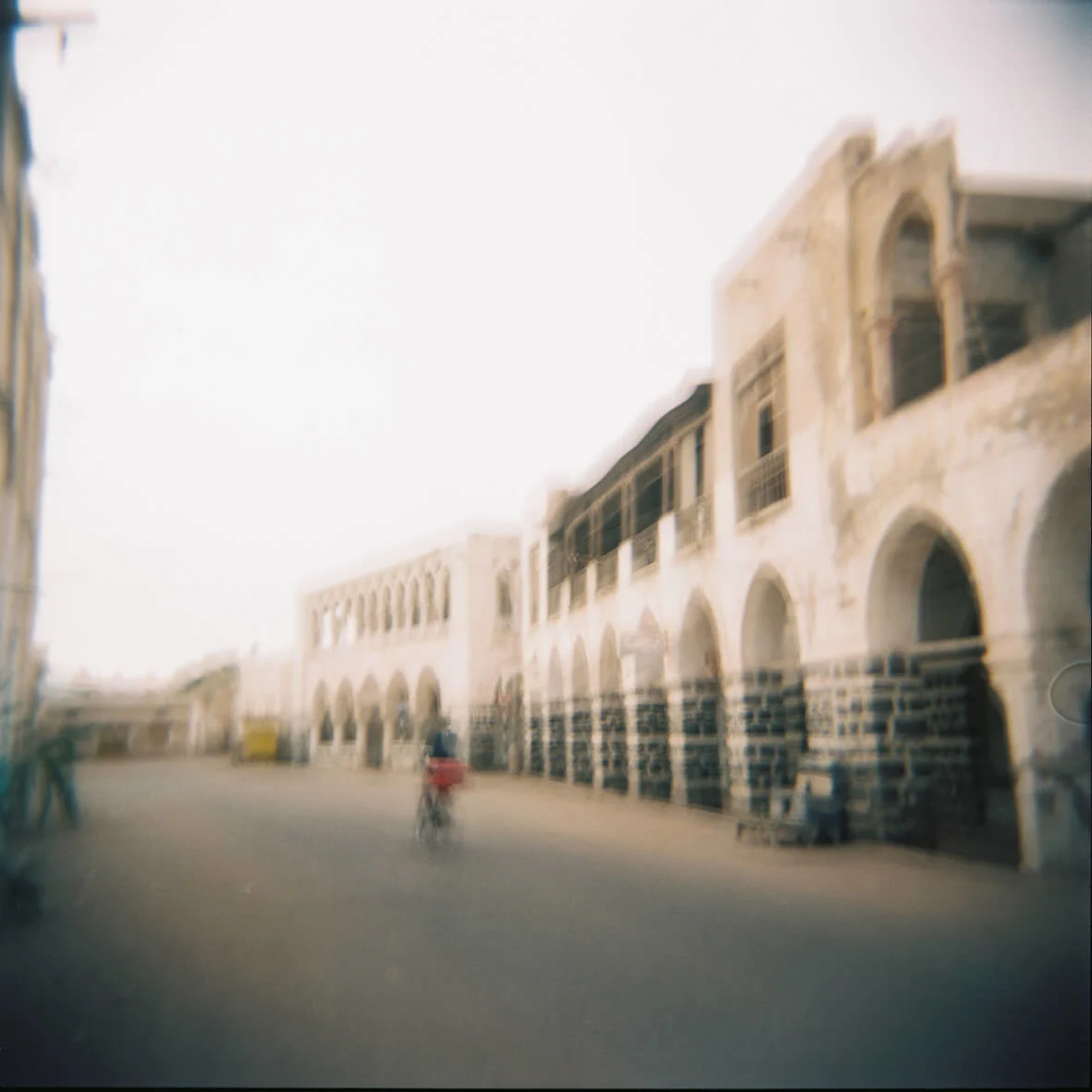
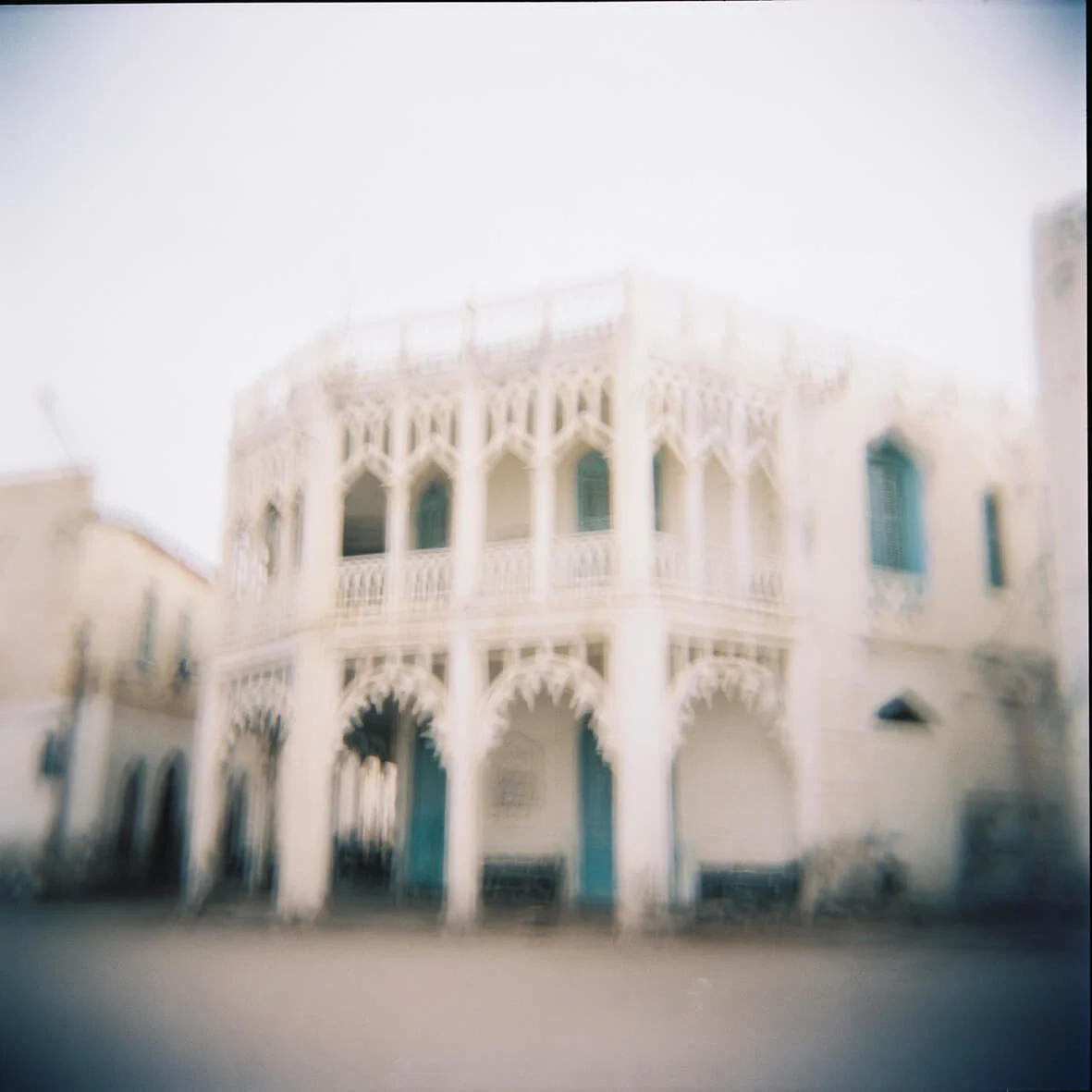
Asmara is the capital city of Eritrea, a country so named from the Greek: Erythra Thalassa: the Red Sea. The salty inlet is a blessing and a curse for this tiny coastal nation. The sand heals. The water cleanses and feeds. And, Eritrea’s thousand kilometers of coastline have been coveted and claimed by empires over the centuries.
Bloody history is enmeshed in the landscape like landmines. “As you go through the forest sometimes you can stumble upon them, unaware” Zerai Araya, a soft spoken instrument maker told me. “Mines wired by strings can be on the leg or the belly or neck. If you come to one along your belly it means it cuts you in half.” He lifted his trousers to show me his leg splattered with pebbled scars. He was injured six times in the war for independence. He worked in the landmine unit and repairing weaponry. “All of them are used to kill people,” he said as we looked at an artillery catalogue. Now he strings instruments.
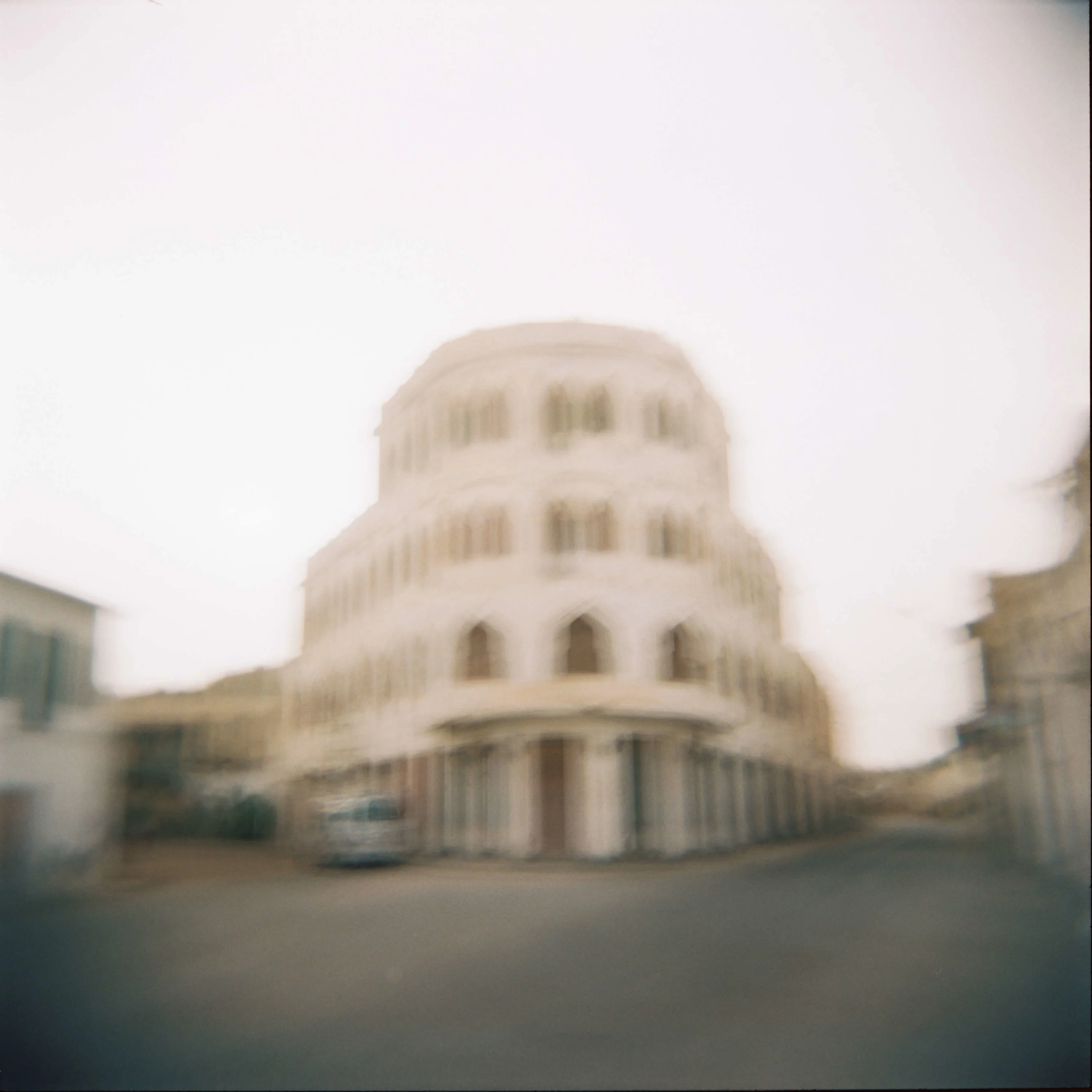
Massawa is a seaside city visibly layered with long histories. On the island buildings have coral walls and arabesque arches, remnants of the Ottoman empire, reminders of how slim the crossing is to Yemen. The port, glowing gold in the evening, though mostly vacant now, shows the sea access that Ethiopia so craved, leading to the thirty year war that predated independence. Ethiopian Emperor Haile Selassie’s former castle stands now as a bombed out relic; lion statues amidst the rubble. Waterfront hotel pools are dried and stained with algae, the stagnation mirroring the economy.
At the entrance of town three massive tanks are a snarl of twisted metal. The machines were destroyed, decommissioned and then installed in memorial of the Fenkil, the decisive 1990 battle that led to Eritrea’s victory over Ethiopia and subsequent independence.
Sometimes you have to go to war to find peace, Yemane Barya, an iconic Eritrean singer sang. The fight of the oppressed will always win.
I found my way to a much quieter monument when I befriended a young single mother of one—she’s my only one, and she’s infinite, she said, of her daughter. She invited me late and still fed me dinner in her mother’s white painted wooden home. “We built it ourselves, after the tank drove through,” she said. She pointed out the foundation of the house as it once stood. Her friend, clucking sympathy, reminded her of all those who lost not just their homes but their lives.
“Everyone has a martyr in their family if you go around and ask,” Dejen told me.
High on a plateau, three ecosystems away from the sea, through desert and craggy mountains is Asmara.
Asmarinos wear leather jackets and white scarves against thin air that morphs throughout the day: piercing sunlight in the morning; raindrops in the after lunch quiet.
There are traces of people who lived here as early as 800 BCE, uncovered with the brushes of archeologists. The transition from village to cosmopolis occurred under Italian colonial rule. Italians were among the last of the European imperial nations to enter Africa with an aggressive air of acquisition. Eritrea was its first colony. The Italians moved their capital from Massawa to Asmara in 1900. They established first a military base where they ran their affairs. They also conscripted Eritrean soldiers to fight on behalf of the Italians in colonial wars.
Asmara today is the color of sand. The buildings are mostly yellow, with a few pinks and brick interspersed. Like Massawa, like everywhere, the physical holds all that’s ever happened here. There’s a hush to the place. Its legacy is violence.
The city grew slowly over its first few decades: a theater, a cathedral, a post office. But it truly took shape in a burst in the 1930s when Italian dictator Benito Mussolini threw money and people at his dreams of an Italian East Africa and prepared to invade neighboring Ethiopia. In 1900 there were 300 Italians in the newly established Asmara. By 1941 there were 50,000.
The buildings were Fascist, reflective of the forces that built them: concrete, modernist, playing with geometry, rigid lines, rationalism, futurism. The city was also entirely segregated. The only developed parts of town were for the Italians. Eritreans who owned land in Italian quarters had it stolen or forcibly sold. Eritreans lived in sprawling suburbs with no infrastructure or planning.
The city holds its history like a stack of petals; everything that has ever happened here, one layer leading to another and another.
In 1935 Italy used Asmara as its base to invade Ethiopia. The war was illegal and brutal. Ethiopia was a member of the League of Nations, as was Italy; members were not meant to attack each other. The invasion was ruthless. Italy sprayed chemical weapons over hospitals, “a fine, death-dealing rain” in Selassie’s words. The Emperor and his family fled to exile until 1941 when with the help of the British and the Allied forces he returned and defeated Italy. It was the end of Italian East Africa.
The British then took Eritrea for a transitional period, but they didn’t plan to stay and they looted the country, dismantling industrial zones and factories and shipping them off to colonies they were more invested in.
In 1952 Eritrea was federated with Ethiopia; but Selassie wanted to own, not share Eritrea, and continued encroaching physically and psychologically. In 1961 Ethiopia annexed Eritrea, setting off the thirty year struggle for independence.
Rebels built complex hidden bases in the mountains and countryside. Asmara was quiet. Selassie did little to invest in the place. In 1974 the Marxist-Leninist Derg regime took over in Ethiopia, and Asmara became a site of brutality and terror. But there was no open fighting in the city, no bombs and tanks like in Massawa, and so Asmara stagnated. Upon liberation there was devastating poverty and infrastructure issues. But the concrete stood.
It was only after independence in 1991 that Eritreans were finally able to reclaim their city. The once segregated center of town is now full of Asmarinos. They sip espresso in cafes they own. The whole central zone of the city has been named a UNESCO heritage site. It is considered one of the most perfectly preserved examples of modernist architecture in the world.
The city holds its history like a stack of petals; everything that has ever happened here, one layer leading to another and another. Press anywhere and wounds burst open; ask about personal history and get proffered scars. Did we have to be everyone we’ve ever been to become who we’re becoming? I wrote in my journal. I think so.
I spent a long morning drinking ginger coffee with Mengisteab Gebregergish, a contemporary singer. He was introduced to me as a young star, someone fresh to intermingle with the war singers I was meeting. He is known for singing in Kunama, though he is Tigrinya. I asked why. He said his family had to flee the war when he was five. They lost everything and he grew up in a different region, surrounded by a different culture and language.
We were at Expo, a sprawling complex at the edge of town that hosts weddings and festivals. Driving back after, Dejen pulled his car over and said: “You know people were murdered there. Many many people, hanged and shot, shot in lines.”

“It was under the Derg. My uncle borrowed a tool from my grandfather and my grandfather said to be careful, to be sure to bring it back.
My uncle said: ‘you should not worry so much about things; worry about my self returning.’
He never came back.
They found him later among the dead in Expo.
At that time it was a prison, a barracks. Now Expo is a place for romance. Lovers go there, there are secret places to be together.”
“Talents are born in you,” Bereket Mengisteab, an iconic singer told me, “they are visible to society.”
“The one who is talented impresses his community…they ask you to sing.”
But, “at the same time,” he said, “musicians were not appreciated by the society.” Society, “needs that talent, they want to use that talent,” but they don’t protect or nurture it, he said.
So how did yours grow? I asked. “I fought for it,” he said. And left the country.
The old man is a legend. Young stars told me not to talk to them until I had spoken to him.
We met in his record shop and studio. The walls downstairs were covered in posters and portraits of him. Upstairs was painted blue. We interrupted a young technician who was helping him digitize his collection of over 300 songs. Seventy years of music, Bereket told me.
We were in an urban space, tucked off the central boulevard downtown, but Bereket’s soul was still connected to the rhythms and the expanse of the rural world where he grew up.
He said he is influenced by “wind that passes through broken trees” and “mountains and the echoes they give,” and the sounds of animals, both peaceful and predatory, at sunset.
He is a poet, a lyricist who writes his own songs, and you can hear it in the precision of his words and his pacing. His cadence was so different from my translator’s that I double checked the translation. I felt something denser than his words. But the translation was impeccable. What I was feeling was supralingual.
Born in 1938, Bereket traveled to Addis Ababa in 1958 to nurture his gift. “I was discriminated by my family, almost like they chased me away,” he said. He built his renown playing weddings and social events, then in 1961 joined Haile Selassie’s theater band. He played with Ethiopia’s biggest stars, Tilahun Gessesse, Mahmoud Ahmed, Bizunesh Bekele and others, and grew to be “at their level.”
It was the era of independence across Africa and he traveled to perform at numerous celebrations. He met Jomo Kenyatta and Muhammad Ali.
But 1961 was also the beginning of the Eritrean war of independence.
Bereket began singing coded songs: strains of liberation couched in love songs; love of country narrated as romance.
If you meet Meley, if you've seen her, please greet her for me,
he sang.
She's hidden by the mountains
I have sent my message by the winds,
I miss her so much, how is she?
“This was produced in Ethiopia and had a hidden political message because I was far from my home, hidden by the mountain, I’m longing for this beautiful girl,” he explained. “Meley is the metaphor for a free Eritrea in the name of a beautiful girl.”
“That song made workers and students join the liberation struggle,” he said.
The Ethiopian regime did not approve of his clandestine messaging. He received death threats. He fled and joined the rebels.
“If you are in the sea it's inevitable that you will be wet; in the struggle you have to face the blood,” he said. “Artists are not cruel. Artists are kind, but the situation made us cruel.”
He fought, he sang, his wife in Addis was imprisoned. At independence he lost his house and shop in Ethiopia, and moved back to Asmara. The government gifted him the space for his studio in gratitude for his contributions to the war efforts.
The birds of summer who left long ago, did all of them get back now?
he sang.
“Metaphorically it's about all the days Eritrea passed,” he said. “Are they coming back when things are getting better? The birds are the people of Eritrea, there are people who left and never came back.”
“It's a very trusted messenger, music,” said Mohad Suleman, a researcher of intangible heritage. “We express our life using music.”
We met at his office in the governmental commission on culture and sports. Outside, teenagers lined up leaning against walls waiting for dance class. Inside, Mohad mused on the inexpressible.
“The Tigrinya beat is a unique one that really includes feeling in addition to the time signature; 12 123 but it's not exactly 5 over 4,” he said.
“When it comes to feeling you can't quite put it into notation. There's some feeling; you have to give room to those who really feel it. You try to put it in time signature, try to put it in.” He trailed off. “It's intangible.”
“It's hard to express in words,” I was told, over and over. I liked it. Like how I always forgot to speak when I spoke to my love; this was itself communication.
Descriptions of music transcend words. Interviews expanded from language to rhythm to reaching for an instrument to showing, playing scales and beats.
Pa pa pa pum pum.
You might have to feel it to get it.
The rhythm during the liberation fight became much faster, Mohad told me. “Everything was fast: the situation, the war, even the bullets were fast…If you are not fast you are not going to survive. Everything has to be fast, the music is also very fast. The melodic structure also changed.”
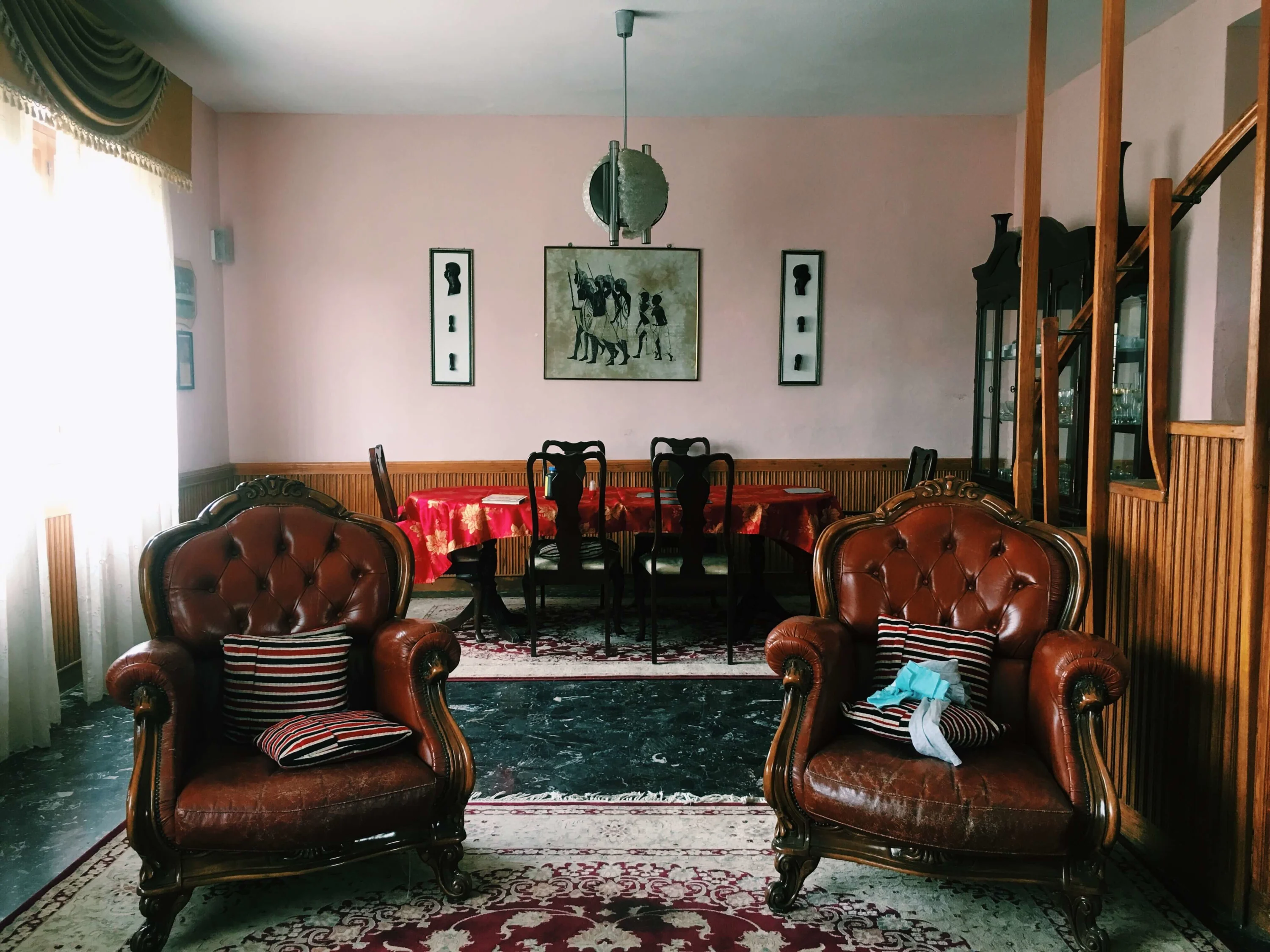
“With the sighs of anguish of millions of Eritreans as his tank of oxygen, Yemane dove into the oceanic depths of his own soul to search for the words and the melodies that would capture it all,” Asennai Musye wrote of one of Eritrea’s most beloved icons. “Love, depth, poignancy, inexhaustible hope, painful yearning for freedom are some of the most common residents of his soul. As gracious of a host he was to these residents, he was never hesitant to put these very residents to work.”
Highly sentient people held the soul of the struggle. And so, they were targeted and censored by the increasingly repressive Ethiopian regimes: first that of Selassie and later the Derg.
“After the coming of Selassie and the 60s, Eritrean music started to decline and was dominated by Amharic,” Dejen told me. “This was the political policy of Selassie because if you want to dominate a people you have to dominate the culture and music is essential. Music was one of the biggest targets.”
“We were invaded by Ethiopian music,” he said. “By the 1980s in Asmara there was almost only Ethiopian music.”
Some feelings, though, are uncontainable.
The luminaries scattered. But wherever they were: Sudan, Saudi Arabia, Germany, the US, they felt their homeland and sang. Singers like Bereket, Yemane Barya and Haile Gebru “In exile they tried to beat this by working together and amazing classic Eritrean songs were produced at that time,” Dejen said.
Time betrayed me, enslaved me, you've made me a refugee, without the right to choose and be chosen
Yemane Barya sang.
It wasn’t just the artists. Waves and waves of refugees fled the wars, the repression, then later the stagnation, the isolation.
Of course, often lost in stories of migration and displacement is the fact that if one third of Eritreans have left; two thirds remain.
Inside the country music evolved in the trenches of the struggle.
Colonizers didn’t have the plan to develop Eritrean traditional music instead they imposed their own culture so the instruments we used were piano and guitar.
There were two separate guerrilla factions : the Eritrean Liberation Front (ELF) launched and dominated the guerrilla fight against Ethiopia in the 1960s. By the 1980s it had been largely surpassed by The Eritrean People’s Liberation Front (EPLF).
The EPLF was a far-left Nationalist rebel group. It was tightly organized and developed its own ideology. Every death was registered. It built surgery units on cots in tents. It established a university in the field, educating citizens in the protracted struggle. It wrote appeals to the UN, explicating the injustice of Ethiopia’s actions; they were largely unanswered.
Internationally, the rebels forged various alliances toward liberation diplomacy. In the field the EPLF promoted a dogged dogma of self-reliance, and fighting the enemy with their own weapons. They raided and stole firearms and ammunition. At the edge of Asmara, just outside the landmine and instrument maker’s house is a graveyard for tanks ravaged beyond repair, intertwined with cactuses and stretching far.
“It is a sad sight,” Zerai said.
I watched the day end with him; soft light, deep memories. He invited me to his home to see his workshop. He showed me a machine he made by retrofitting an old printing press to make fret boards for krars, the classical Eritrean harp. Traditionally the krar was in pentatonic scale with five strings, but sometimes the kids play with seven now, he said. He’s constantly tinkering and evolving the instruments.
“Since we were in colonization we didn't have the opportunity to develop,” he said. “Colonizers didn't have the plan to develop Eritrean traditional music instead they imposed their own culture so the instruments we used were piano and guitar. That came from colonization, it's not ours. Now we are trying to develop our traditional music,” he said. He makes electric krars, drum machines, watas, an Eritrean violin-like instrument shaped like a cross. He made the instruments first and he’s now recruiting a band to play them.
He built his first guitar in 1988, just before independence. Before that he spent fourteen years on the frontlines around Nakfa. “I think pitch means distance,” he said, “even missiles set their distance with pitch.”
His favorite subject was physics and he studied mechanical engineering. He is quiet with a vast interior. Unassuming, he is just doing as he does, but if you notice and lean in you realize he goes on forever. His father was an Orthodox priest and sent him to study multiple religions as a child: Islam, Catholicism, Protestantism. “It gave me strength,” he said. “It made me a philosophical person.”
Let them sprinkle my land with poisons that hinder breath,
Let them pour on me chemical weapons and liquids,
Those external factors will not disturb my spirit.
Estifanso Abraham, another iconic singer sang.
Fascism and destructive plans, inhumane judgments that oppress people
Will finally lose shamefully.
The rebels made their base in the Sahel, a region with punishing climate and rugged terrain. The inhospitality protected the fighters; Ethiopia tried eight times to retake the base in Nakfa, nearly leveling the town to the ground, but the rebels held strong. The country’s currency is now named for the place.
“The motto of the struggle was to liberate the people step by step, so the music was doing the same: step by step, it was part of it,” Fihiraa renowned liberation singer told me.
“The strength of the music was experience.”
He has a silky voice and a twinkle in his eyes, easy creases in his smiling cheeks. He was a talented dancer in his day.
He was in the trenches from 1976 until 1991. “Half of my life,” he said.
“We were in hidden places: in the forest, under trees, under ground with all the bombings around us. As part of the struggle almost everyone has tasted a bullet. Me, as an example, I was injured on my leg.”
He lifted his pant leg to show me crater-like scars. “It was a Soviet rocket,” he said, “some comrades in the cultural troop died at that time.”
“It was in such a situation that music was flourishing,” he said. “This hardship, the bombings, all the incidents that you see, the comrades leaving you, it urges you to write, that's what you do. That's how we made our music, our songs. That raw material was realized into art through those experiences.”
Music was organized like everything else. Talent was identified, groups were formed, often among the injured when they could no longer fight. Artists produced songs of the struggle, for the struggle. “The albums were made collectively and we never thought of having our own career of it,” he said. “Most never thought they would get back alive.”
“I think that's why the songs are so beautiful,” Dejen said, “because they do it with passion, with no self interest.”
In 1991 the EPLF finally defeated Ethiopia. The tenacious rebels were bedraggled but victorious against Goliathan enemies. Ethiopia’s population is over a 100 million people. Eritrea’s is four and a half million.
In the aftermath Fihira sang:
The mountains the valleys all bombarded during the liberation struggle are asking what will be our fate now after independence?
Now the mountains and trenches are lonely they are used to the sounds of cluster bombs
The trees need to be repaid for all their costs.
Independence brought euphoria, but just seven years later, war erupted again. A border skirmish escalated into two years of fighting; and then a protracted peace process. Most Eritreans were chased from Addis in that time. That was when Dejen moved to Asmara. His parents had fled Eritrea when he was young and he was raised in Ethiopia connecting to history and culture through cassette tapes his father played. In the Second Border War his family fled again, back home this time. The music from that eruptive era is his favorite. “The time helps you to be creative it brings so much emotions inside you,” he said. “Those emotions really help you to write.”
Efrem Habtetsion is a poet and editor at HDRI, the state run publishing house. During the war he was on the frontlines in the mountains with the medics tallying the dead.
After the fighting, a woman was preparing coffee for the troops, roasting and boiling and re-roasting the beans. She put music on in the background.
“We were in deep sorrow within ourselves,” Efrem recalled, “terrible memories about the war, lots of death. But in our culture in Eritrea you come back, you dance, you sing to heal your feelings.”
The woman played a song by Yemane Barya, Efrem’s favorite.
If what I dream could be realized
If my desires could be met
I would go back to my childhood neighborhood and play with my friends
My people, our land
The old Asmara that I know
I grew up with her butter, milk and honey
How is she doing? Sweet Asmara
He sang.
“Everybody was crying,” he said.
“Someone went up and stopped the music--how can you play this song now?” they said.
“This one is so touching” Dejen told me, over and over.
Touching touching emotion emotionality, I wrote in my notes. Talking to poets about poetry.
We would listen to music and he would translate the lyrics, expanding into commentary. Dejen is an artist, he is also employed at the state publishing house—Efrem is his boss—and he was assigned to help me by the ruling party.
It was the EPLF with their strict discipline and stoicism that led Eritrea to independence. After, the rebel group created its political party, the People’s Front for Democracy and Justice. Isaias Afewerki was a respected rebel leader and became independent Eritrea’s first president. He has been in power ever since. A transitional National Assembly has never been replaced; elections have been repeatedly postponed. A new constitution that was ratified in 1997 has never been implemented. Everyone in the country completes military training at the end of high school, and after begins requisite national service that continues indefinitely. All independent media was forcibly shut in 2001. While the Border War ended in 2000, a testy standoff with Ethiopia lasted until 2018 when a peace deal was signed, the border was opened and rapprochement began. Eritrea has been largely marginalized from the international community, in part through sanctions, and in part by strict internal policies.
I asked some youth about the country’s isolation: does it come from within or without? It’s both, they said, co-created, like all dynamics. When the government implements new restrictions, like this past May, when all social media sites were shut down, they say it’s for security.
Suspicion and paranoia are learned behaviors; reasonable responses to betrayal. But sometimes the skills necessary to survive are not the same as those necessary to thrive. Self reliance won the struggle, but now many find the strictures constraining.
Someone went up and stopped the music--how can you play this song now?
One young artist submitted a love song to the censorship board. Most singers don’t bother with the committee, housed at the ministry of information. They write their songs, they make their music videos, they leave them at cyber cafes overnight when the connection is slightly better to upload them. Mostly it’s Eritreans in the diaspora who watch the videos online; they have the bandwidth. Inside the country, only 1.3 percent of people have access to the internet, the lowest in the world. People share clips on flash drives and phones, if they have them. Access to sim cards is also restricted and only 9% of people have a cellphone.
This artist though, aspired for something bigger and broader than the normal YouTube channels, so he wanted approval. But his love song was on interminable waiting, and in this country of coded political messages the board was deeply offended. The artist and all collaborators were threatened with imprisonment.
Wedi Tikabo, a well known Eritrean singer was once a nationalist. He toured internationally with the government cultural troop, then took the occasion to abscond and flee. He released a protest song denouncing the government in 2013.
Throughout the 2000s Eritrea had the third highest population of refugees in the world, after Syria and Afghanistan. Many claimed to be fleeing the national service. Others fled the stagnation. The economy contracted and stalled. Many people survive on remittances. The diaspora is intimately connected to the country, emotionally, politically and financially. It was diasporans who funded much of the struggle and Eritrea still charges a diaspora tax. Many are also hugely critical of the government; they vent vociferous critiques online. It’s understandable; if they are outside the country it’s because for them staying was untenable.
Inside the country people have more muted, complex, and layered critiques. People love their country; and they want it to be better.
You can understand, the young single mother told me. We fought for so long, then we had independence, then just a few years later there was war again. The hyper vigilance is a reasonable reaction given the history; it also is hindering growth and expansion. Her 13-year-old daughter disagreed: the president could open up to other countries and have allies, she said. It doesn’t have to be this way.
Still, always, they agree, there’s no place like home.
I met a wandering businessman at a concert in the capital. His history was of half-starts and ruptures, failed business ventures, homes never lived in: “I live in Houston,” he said; “I haven’t been there since the 90s.”
When he was 12 he fled Asmara with his little brother. His father, a more successful businessman, was, he said, the primary importer of pharmaceuticals in the 70s under the Derg. When I visited his house in Asmara, with its smooth, twisting wooden staircase, wide balcony, and slatted blinds, I asked if his father was an architect. No, he was just rich he said.
He said his father was funding the struggle through secret networks. A collaborator had a list of key financiers written on paper. When he was captured, he tried to swallow it, but failed. Scrawled at the top was his father’s name.
He was lucky, the businessman told me, his father was sentenced to five years in prison and only served three. Others were killed. When his father got out he left his businesses and reestablished himself in Addis Ababa.
In the meantime, the little boy traveled with a smuggler to Sudan to stay with an uncle. Then he flew to Italy to stay with an aunt. Later he moved to Houston where he was eventually joined by his mother.
His journey continued in a similar choppy rhythm. When he grew up he tried his luck in Rome, Juba, Dubai, Kampala, and was now back in Asmara. He showed me his defunct cookie factory, stagnant and sad. He dreams now of starting an internet delivery service, in the country with the world’s lowest internet connectivity rate.
Trauma hung around him like fumes. He asked me questions twice; smoked incessantly while hating himself; drank from midmorning, dripped toxins from his forehead and blamed me for the heat. He said he was going to move to Massawa to meditate to come to the present moment.
Where are you now? I asked.
“I’m in the past, in the future, I’m in the present,” he said, “it’s all jumbled.”
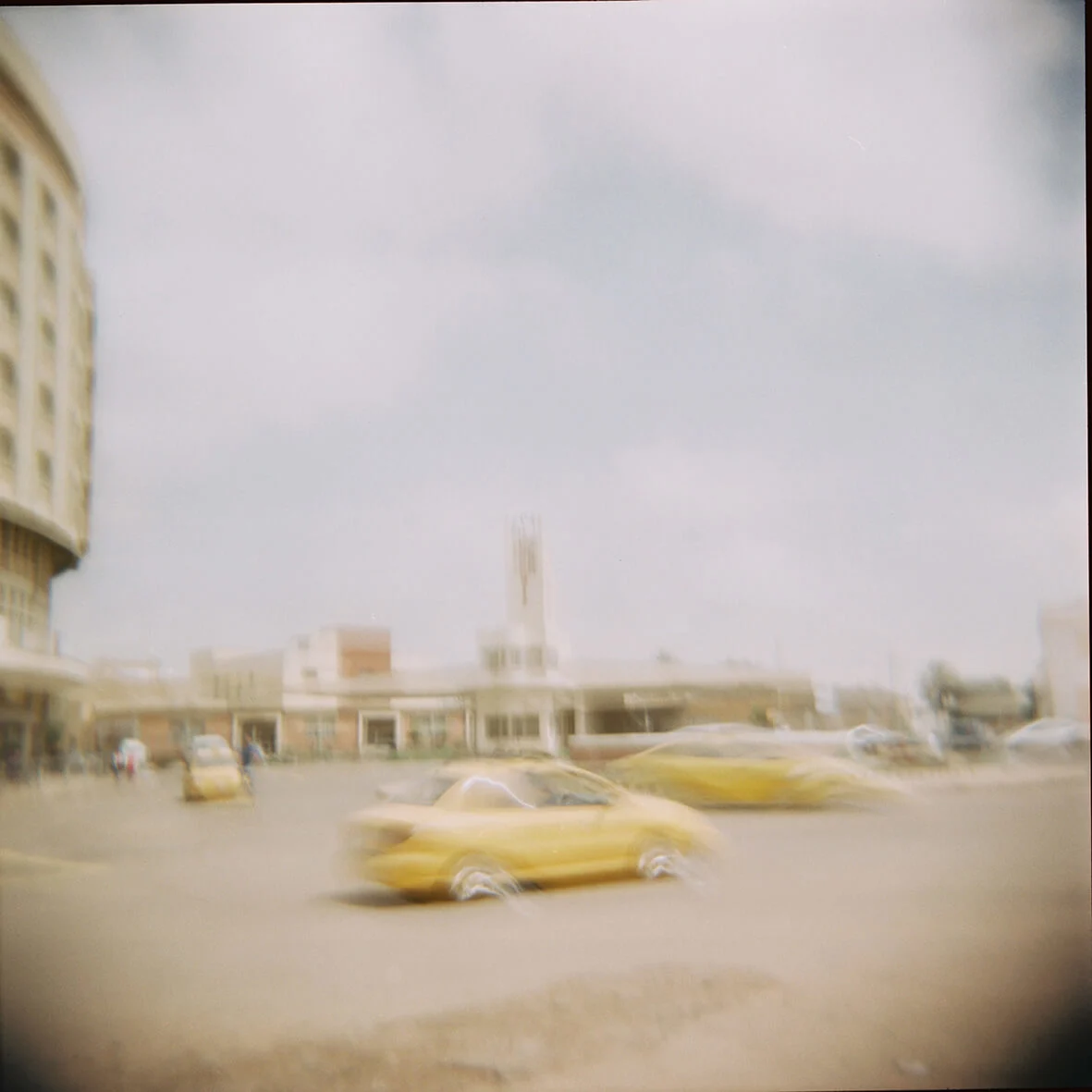
I’m in the past, in the future, I’m in the present,” he said, “it’s all jumbled.
He has made everything beautiful in its time. A wooden plaque quoting Ecclesiastes hangs over the window of Thomas Yemane’s recording studio. Across the street is the Fiat building, one of Asmara’s most famous futurist structures. Inside green egg crates line the walls. Records are pasted in patterns. The floor is layered with carpets of varying hues.
Everything will be beautiful. In the meantime, Thomas is preparing.
He’s 27 and he has the fire of the age. He has years of work behind him, but he knows he’s still in process. He’s studying always, making video after video—250 since 2011—laying the groundwork for his future. He’s met the girl he wants to marry, but he’s not rushed; she has to finish school, he’s still establishing himself. He’d love to travel someday, just to visit, but not until his foundation is more firmly established at home. “I love it here,” he said, “all my dreams and ambitions are here.”
He just started a YouTube channel. He’s producing music videos for some of the country’s biggest stars. I met him on a shoot for Awet Teklemariam who won Shingrwa—Eritrean Idol—last year. He produced an update on Bereket Mengisteab’s Meley. He shot a historic drama in black and white commemorating the Eritrean resistance to Ethiopian occupation. He’s inspired by Latin musicians and Chris Brown and young Eritreans like Natey Enteylwo who he says is pushing boundaries aesthetically in her work.
We walked down the central boulevard and he told me about his family. He was born in the struggle “under a tree or something,” he smiled. His mother was a nurse and his father was a fighter. He has one brother who is a truck driver and one who had cerebral malaria when he was young and is now paralyzed. “It’s me and my mother who take care of him,” he said, peacefully. He is always thanking God.
An Eritrean flag drapes across the studio ceiling. The flag was re-designed at independence with aspirational symbolism. An olive branch in the center represents unity; it’s the only tree that grows in both the high and lowlands. There are three triangles that intersect in red and green and blue. The red is for the blood that flowed for the country. It starts wide and shrinks to a point. The green for agriculture and the blue for the sea start small and expand.
Efrem, the poet, took me clubbing one night. As we watched a band of dancers he told me: “the main difference between the Tigray in Ethiopia and the Tigray in Eritrea is that we’re Eritrean. But it’s an important difference.” He said the intense nationalism Eritreans express is “because we fought so hard to be Eritrean.”
Many people I met and greeted would ask me how I found Eritrea. “It’s beautiful,” I would say. “How do you find Eritrea?” I would ask back. They would pause, shrug a bit. “Hard sometimes?” I would ask. Yes, they agreed, but we hope soon it will be better. In its time.
The lacuna
I had forgotten how he felt. The density of it; the allness of it; the velvet; the resonance; the power. There you are.
But I had written on it, so when I saw it again I had hundreds of pages to study. Facts of feelings; the strength to submit. The text is imbued with the energy between us. Yes, what happened, but more importantly how I wrote it. The tonality bleeds love. Some feelings are uncontainable. Some feelings realign the world. Sometimes you have to go to war to find peace. I gave my life force to the question. A risk, but not really an option.
I walked so long in the cold I gave myself tendinitis. I took my body where bodies are expensive. They put waves inside my ligaments, needles in my back. I cracked my skull open to wash everything inside. It took four months to walk normally again.
I fasted. I knelt on the floor. I excavated my underworld. I exorcised my demons one by one by one. For us or for me, I wrote, no difference, and, nothing else to do.
I’m aligning to destiny and falling forward, I said. Endurance. Faith.
Liberation is ruthless. I purged my life of anything that didn’t feed. Went to the mountain. Took two months to climb down.
I rebuffed a presidential advisor, a psychic who promised sexual samadhi, a jazz singer, an analyst, two photographers, a poet, a businessman, then I lost count. I’m purifying, I said. It was not strenuous, I didn’t want them.
I cried and cried and cried and cried. Rain drops and landslides. My rigidities crashed around me. The ending of everything that came before burned and quaked like a gong. Skins and skins fell to dust on the floor.
My clothing changed from black to gold to white.
His name in cursive. His name in type. His face. My body. The pain.
I was buried by the Red Sea, my pulse palpitating in my ankles.
I prayed for him in four oceans.
And finally I found my way to Asmara where I spent my days listening to poetry to echo my insides and remind me that this might be madness but it’s deeply human.
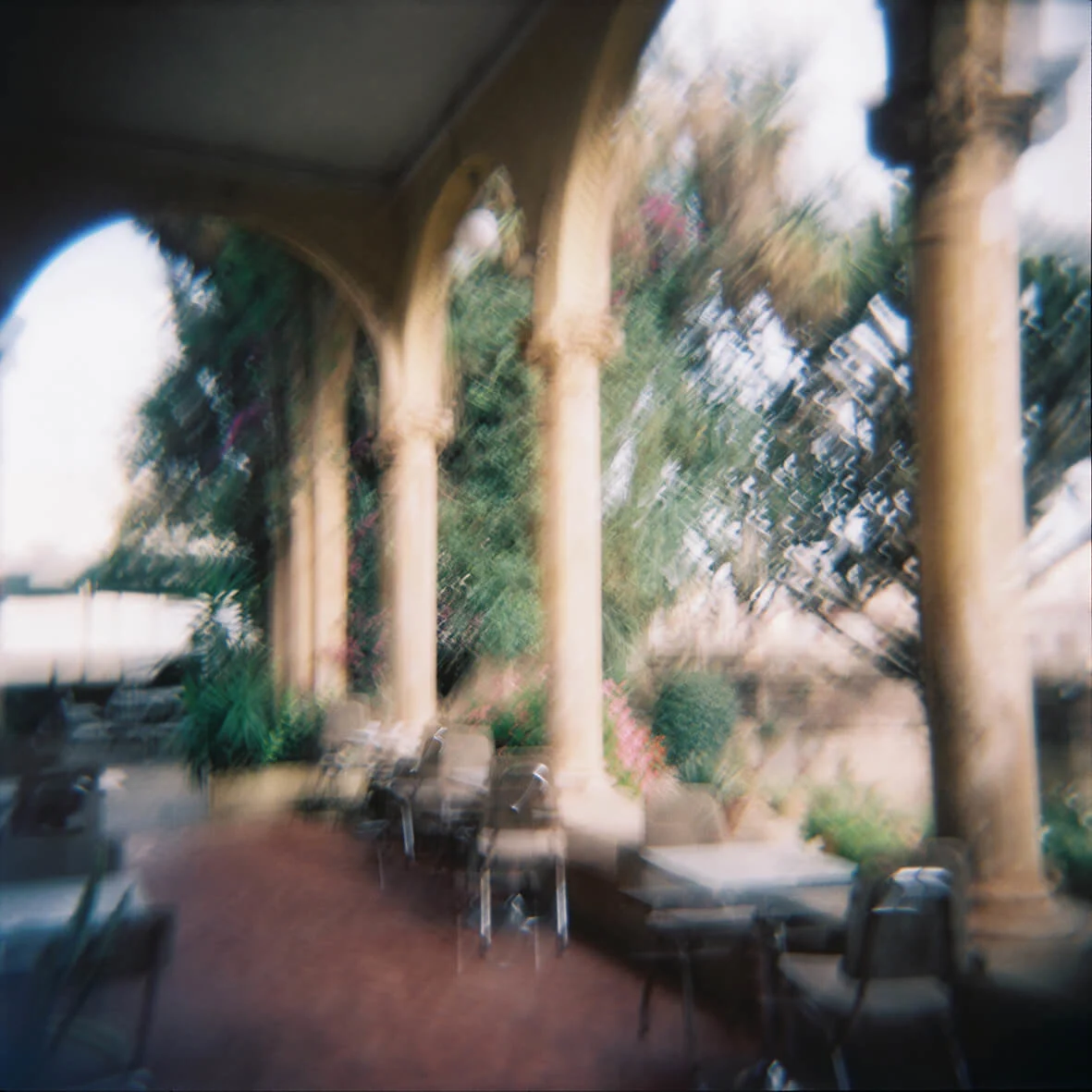
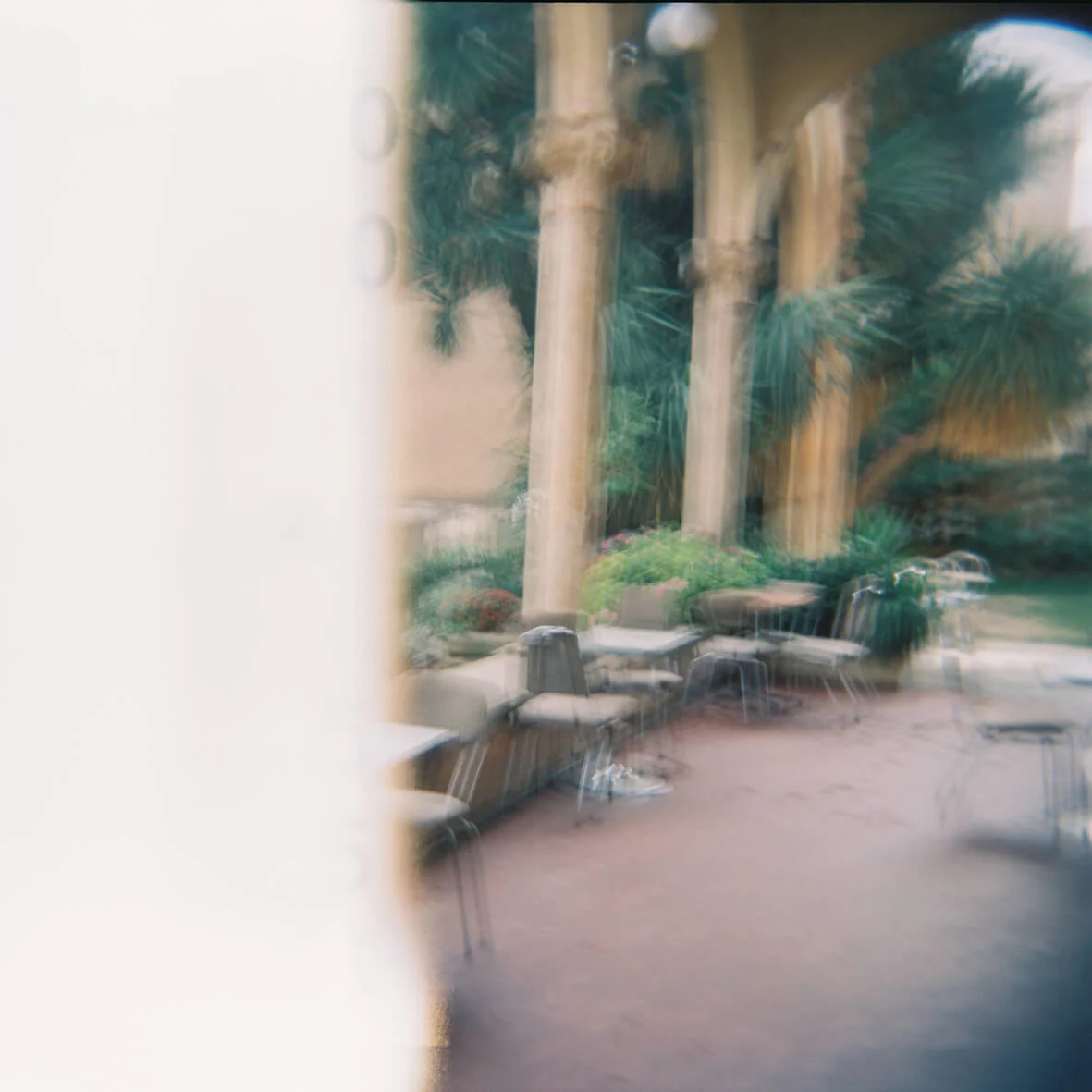
Cinema Asmara is where the luminaries drink espresso.
I was sitting there when Fihira arrived in plaid pants, tasseled green shoes and a beret. He beamed his easy, glowing smile when he saw me and paid for my drink, though we sat at different tables, me writing, him in a meeting.
The day before, elsewhere, we drank tea and he told me: “after independence came I was changed, I started to have a very calm life. As I changed my music also changed.”
What’s the new album about? I asked.
“It's about love,” he said, “no more bombs.”

